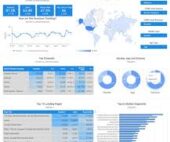Salesforce Flow Tests: What Are the Limitations?
Salesforce Flow Tests are essential for ensuring automation reliability, but they aren’t without their constraints. Recognizing these limitations is key to refining your automation strategy and avoiding potential roadblocks. Here’s an overview of common challenges, along with insights into how you can navigate them to maximize the effectiveness of your testing processes.
The Role of Flow Tests in Automation
Automated processes in Salesforce are powerful, but they don’t optimize themselves. Proper setup and rigorous testing are essential to ensure that your automations run smoothly. While Salesforce Flow Tests help verify functionality, they have inherent limitations that, if misunderstood, could lead to inefficiencies or rework. By understanding these boundaries, you can make informed decisions to strengthen your overall approach to testing and automation.
Key Limitations of Salesforce Flow Tests
- Limited Trigger Compatibility
- Flow tests are only available for record-triggered flows and Data Cloud-triggered flows.
- Flows triggered by record deletions are not supported.
- Date-Specific Testing Issues
- If your test relies on a record having a date set to today, you’ll need to manually adjust the date before running the test. Otherwise, it will use the date configured when the test was created, causing potential failures.
- Test Quantity Restrictions
- Each Flow can accommodate a maximum of 200 tests, limiting flexibility in scenarios with extensive variations.
- Asynchronous Path Testing
- Flow tests do not support testing for asynchronous flow paths, restricting validation for certain operations.
- Object-Specific Scope
- Tests are limited to the current object associated with the flow. You cannot create tests that involve child or parent objects.
- Formula and Resource Limitations
- Flow tests do not support the use of formulas, variables, or other resources in their creation, reducing customization capabilities.

Final Thoughts
Mastering Salesforce Flow Tests means leveraging their strengths while acknowledging their constraints. Optimized automations require careful planning, robust testing, and a clear understanding of the tools’ boundaries.
Have questions about improving your Salesforce Flows or testing strategy? Let’s chat and explore ways to fine-tune your automations!
🔔🔔 Follow us on LinkedIn 🔔🔔













